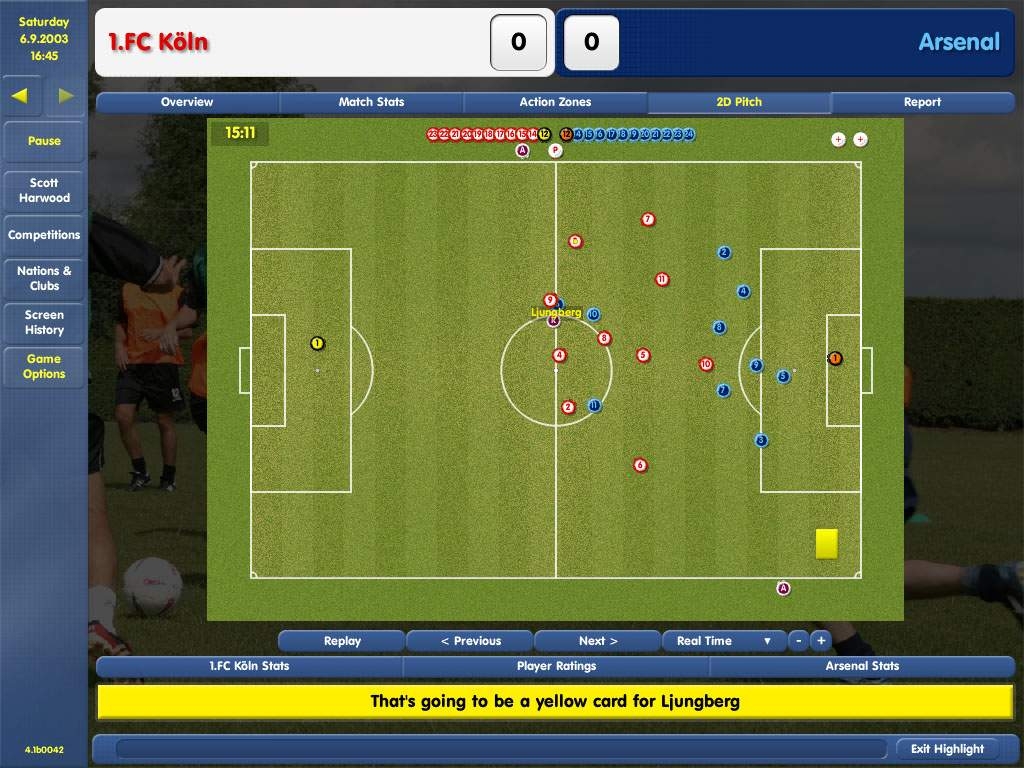Video Gamer is reader-supported. When you buy through links on our site, we may earn an affiliate commission. Prices subject to change. Learn more
Football Manager 2017 comes with a lot of changes and improvements over last year’s game. It must be tough for the developer, Sports Interactive, to find new things to add when they’ve already been fine tuning the formula for over two decades. One area in which large strides are being made is the visual match engine. It now looks more like a real game of football than ever before, but for me there’s only one way to play FM: overhead, 2D, looking at little round blobs run around. That is the quintessential Football Manager experience.
For a very long time back in the dark ages, when games arrived on floppy discs, football management games weren’t nearly as complicated and in-depth as they are today. That doesn’t mean they weren’t totally engrossing; I spent many, many hours plugging away at Premier Manager in the early 90s before moving onto the Championship Manager and then Football Manager when the great split of 2004 happened.
/https://oimg.videogamer.com/images/8f5d/bb02fa9d-99a9-4848-831d-5d5dbba13101_Old_School_Championship_Manager_screen.jpg)
Cast your mind back to a time before March 28, 2003. All Championship Manager games released prior to this date had a word-based match engine. So, while today we can watch games being played out in what looks like a reasonable approximation of football, back then all we got were words. What was happening on the pitch mostly took place in our minds, with a bit of written commentary being pieced together into a Match of the Day highlights package running in our heads. I imagined John Motson commentating, but later preferred the sound of Garth Crooks’ passionate screams.
Although a complete lack of match graphics might seem archaic, it glossed over what I expect were all manner of oddities in the match engine. Just like you paint a picture of characters and locations read about in books, I saw my team playing and it seemed real. Anyone who plays Football Manager to extremes will tell you how it can blur the line between the virtual and real worlds (in which it’s often sad to realise the team you believed were doing well is only doing so inside your PC – Spurs weren’t in the 2011 Champions League final and I know that now!), and this phenomenon stretches back to way before the simulation started to look anything like real football.
But then, in 2003, we got an overhead, 2D view of matches. And everything changed. Words were joined with small circles running around a football pitch, and to the millions of players it was like watching the real thing. The 30-yard screamers we’d formed an image of were now played out in glorious 2D action. When one round blob smashed another, smaller, round blob into the net, all the polygons in the world couldn’t have improved the experience. And thus, my love of the round blobs began. Championship Manager, and a year later, Football Manager, had reached its zenith.
Blobs, as simple as they were, gave players a physicality they’d never had before. You could see your team running around, darting past opposition defenders or taking down the last man and getting sent off. Words had seemed like enough, but the blob future was here and there was no going back. Without any animations to worry about, the kit-coloured blobs matched the game engine and didn’t highlight too many flaws. A brain can accept a small 2D shape having a strange moment of the edge of the penalty area, as it doesn’t look like a person. The blobs no doubt hid a multitude of AI sins.
/https://oimg.videogamer.com/images/8a17/fm_2009_6.jpg)
Football Manager 2009 introduced a 3D match engine, so you could watch polygonal men running around, doing your bidding with varying degrees of success and willingness. I hated it. I mean, I played FM 2009 a lot, but that 3D match view was instantly binned in favour of my good friends the 2D blobs. There’s no better way to break immersion in Football Manager than to see Luka Modrić surge into the box, turn away from goal and then pass the ball back to the keeper 90 metres away. That isn’t how real footballers behave and the closer FM got to looking real the harder it became to lose myself in the experience.
Blobs, then. To this day (unless I’m making a groundbreaking YouTube Football Manager Let’s Play series) I play with the classic 2D overhead view. Those blobs give me all the realism I want, a connection to the players, and a semblance of action, without the ugliness that comes from higher quality rendering. One day, when Football Manager looks more lifelike than Wayne Rooney, I’ll look back at the little round guys and wonder how I loved them so much. For now, they deliver everything Football Manager needs.
